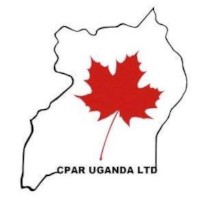Over 2.7 billion shillings (Ushs. 2,724,716,899 – two billion, seven hundred twenty four million, seven hundred sixteen thousand, eight hundred and ninety nine shillings) was CPAR Uganda’s expenditure during our financial year which begun 1st April 2012 and ended 31st March 2013. Spent, primarily, on implementing six development interventions in nine districts of Alebtong, Dokolo, Pader, Agago, Nwoya, Lamwo, Abim, Nakapiripirit and Amudat.
In doing so, we significantly contributed to the achievement of our mission that “households in rural Uganda ably meet the basic needs of their members, through enhanced livelihoods; access to health care, clean water, sufficient and nutritious food.” Here we share three major highlights how so:
Food, nutrition and livelihood securities enhanced:
- 68 percent of benefiting farmers of one of our interventions, case in point, estimated that the food they produced was sufficient to provide for the nutritional needs of their individual households for an average period of eight months.
- Benefiting farmers of another of our interventions, for example, yielded 16.11 metric tonnes of beans and 12.84 metric tonnes of groundnuts; thus attaining a harvest to sowing ratio of 1:6 for beans and 1:4 for groundnuts.
- Another good example, a benefiting group of one of our interventions harvested 100 kilograms of dried sesame seed; considering that we provided each participating group with on average 15 kilograms of sesame seed to plant in a three acre garden.
- 60 percent of sunflower seed (30,000 kilograms) produced from demo fields established under one of our interventions for the benefit of farmers was sold to Mukwano Industries agents by the farmers themselves.
Culture of saving enhanced:
- Households which benefited from one of our interventions consistently saved 1,000 to 3,000 shillings weekly.
- Over 2,100 farmers who benefited from another of our interventions actively saved with their respective group village savings and loan associations (VSLAs). They saved over Ushs. 63,000,000 (sixty three million shillings); had accumulated over Ushs. 10,000,000 (ten million shillings) worth of welfare funds; and had accessed group loans amounting to over Ushs. 38,000,000 (thirty eight million shillings).
- Others who benefited from another of our interventions made combined savings deposits of over Ushs. 70,000,000 (seventy million shillings); and accessed over Ushs. 60,000,000 (sixty million shillings) in credit combined from their VSLAs.
Social capital built:
- Formal and informal farmer group networks were formed and cohesion among farmer group members nurtured. And through these networks, households supported each other, in order to cope with adverse effects of unanticipated shocks, such as drought and insecurity.
- The networks, in addition, for example, created a safe environment for people living with HIV and AIDS to speak openly about their status and to receive social support that enabled them and their households to live positively, without fear.
CPAR Uganda’s revenue for the year was Ushs. 2,654,503,575 (two billion six hundred and fifty four million five hundred and three thousand five hundred and seventy five shillings); meaning our expenditure was higher than our revenue. CPAR Uganda, thus, incurred a deficit of Ushs. 141,680,443 (one hundred and forty one million, six hundred sixty thousand four hundred and forty three shillings) during the year in report.
We generated 13 percent of our revenue for the year from the use of CPAR Uganda assets. We are therefore grateful to our funding partners who provided 87 percent of our revenue:
- United Nations Development Programme (UNDP)
- DanChurchAid (DCA)
- Canadian Physicians for Aid and Relief (CPAR)
- Agribusiness Initiative Trust (ABI Trust)
- United Nations Food and Agriculture Organisation (FAO)
Within the non-profit sector, we are in an enviable position – as at 31st March 2013, CPAR Uganda was capitalised at Ushs. 597,406,357 (five hundred ninety seven million, four hundred six thousand, three hundred and fifty seven shillings); the book value of our fixed assets (land, buildings, vehicles, office and other equipment).
It was a good year, overall. We were able to attract significant revenue; implement programmes; and move closer to our vision of “Ugandan rural men, women and children lead healthy and dignified lives, during which their rights are respected and their basic needs are met.”


5 responses to “CPAR Uganda Ltd 2012/2013 Annual Report”
I think CPAR Uganda has done a lot on training people how to save money which is not easy just because people would want to finish what they have on hand forgetting that they may need it the next day by that CPAR Uganda has trained us the innovators how to plan, budget and save money with the help of cash flow.
LikeLike
This is the kind of training that we need to acquire in our daily life skills. Saving from the little that we earn is really very important as these savings can be used in times of need. Take for instance the situation at hand “Covid 19” if most of the people were trained in the skills of saving the little they earn, we would not be so much affected the way we are today.
LikeLiked by 1 person
Yes, absolutely.
LikeLike
If one can’t save from the little they are earning,then they better not lie to themselves that they can be able to save when they start earning large amounts
LikeLiked by 2 people
Exactly Dorah, excatly.
LikeLike